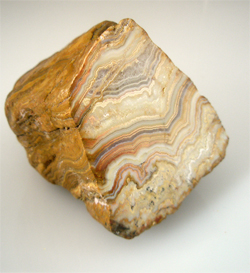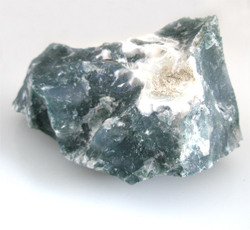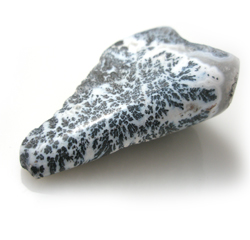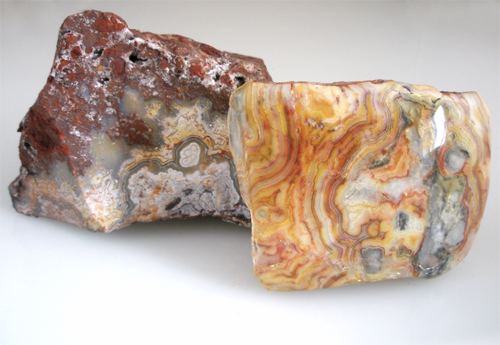 |
|
Agate Agates come in many forms. There are geodes or druzies where at the center there is an open cavity, sometimes lined with crystals. Agate nodules, where is center is filled with agate or other minerals. There is Vein or Seam Agates which form in the cracks and layers of different kinds of rock. Agates in sedimentary rocks formed when silica was slowly absorbed from the circulating ground water. They are often agatized bones of dinosaurs, sponges or corals. Ruin or brecciated agate is caused by the tectonic movements which caused the agate material to break, dislodge and reseal. In many cases, as with the geodes or nodules it must be cracked or cut in order to see the stone within. |
  |
|
Agates are found all over the world and have been used for centuries beginning around the 4th and 3rd centuries BC. The agate has been recovered at a number of ancient sites, indicating its widespread use in the ancient world. Industry uses agates chiefly to make ornaments such as jewelry, pins, brooches, paper knives, inkstands, marbles and seals. Because of its hardness and ability to resist acids, agate is used to make mortars and pestles to crush and mix chemicals. Because of the high polish possible with agate it has been used for centuries for leather burnishing tools. Agates are stones with hidden images. Of course, the images here cannot be seen from the outside, but are revealed only if the stone is broken, cut or polished. They are natural stone beauties which can appear to us as images and sensory perceptions of images. It’s a gem rock where multiple minerals and gems are combined together. With all this in mind, Agates are grounding stones aiding in emotional, physical and intellectual balance. Different types of agate include: There is so much information that we'd like to include on our page, so if you're still interested in this wonderful stone a good place to start is with the book called, "Agates" or "Agates II" by Johann Zenz. He includes a bounty of amazing pictures and the history behind Agates. Pick up a copy, you will not be disappointed. |
 |
Desert Rosing Trading. All Rights Reserved.

